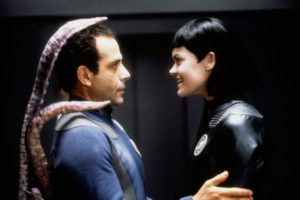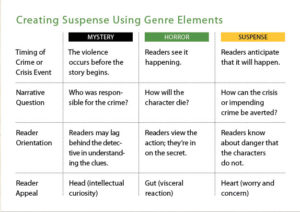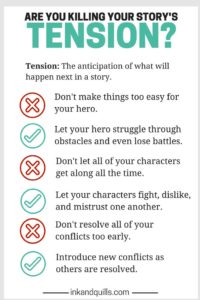Welcome to March 13th, and the first morning of a bright Full Moon. Both of these facts should contribute to my essay, hopefully for the better.
 I’ve been writing off and on since 1977. More off than on, just like my normal mental state. The first few stories I horrifically assembled were based on some dreams with the antics of some of my friends mixed in. I was still in high school and I hung out with the freaks, geeks, and weirdos. I also spent time with some of the stoner and drug using folks, even though I never partook. (No, really, I was even sorta famous for it.) On top of that, I was friendly with many of the jocks, and even tried out for the baseball team as a pitcher. I still think I didn’t get on the team because I drilled the coach with a line shot off of his cranium during a practice. Well, that or because I had a wicked fast ball that I couldn’t control. Anyways…
I’ve been writing off and on since 1977. More off than on, just like my normal mental state. The first few stories I horrifically assembled were based on some dreams with the antics of some of my friends mixed in. I was still in high school and I hung out with the freaks, geeks, and weirdos. I also spent time with some of the stoner and drug using folks, even though I never partook. (No, really, I was even sorta famous for it.) On top of that, I was friendly with many of the jocks, and even tried out for the baseball team as a pitcher. I still think I didn’t get on the team because I drilled the coach with a line shot off of his cranium during a practice. Well, that or because I had a wicked fast ball that I couldn’t control. Anyways…
Over the years, I’ve made friends and lost some, drifted apart or buried others. Most of the time I admit I was just too lazy to send a letter or pick up the phone to say hello. Some folks were just acquaintances or Friends-of-Friends.
Some folks were people I once just said hello to. A good example is Fiona. My wife and I were going through the checkout line at the North Island Commissary (like a military store), and the young lady who was ringing things up was the Uber Queen of the Goths. Every bit of exposed skin was pale, like the pallor of the dead. Fiona wore all black, of course. She was also very nice and friendly. For years my wife and I would recall Fiona out of the blue. The only reason we know her name is because of her name tag. She’s appeared in two of my books in one form or another.
All of the friends, acquaintances, and random weirdos and strangers I’ve encountered in my life at one time or another are all now living as part of the DNA in the characters I write. I never try to copy them directly — it would feel like plagiarizing meatspace. I take tiny bits of personality and blend them together. The subtle half-wink as they tell a joke; the way their voice wavers as they yell in anger; the way they smell because they don’t believe in deodorant. All of these slices can come together to create a complete and believable character. In many cases, I know why they do what they do. The old friend who never used deodorant was too poor to afford the luxury. That background adds seasoning for characters. Now I know how they may act in certain situations, like finding an envelope of hundred dollar bills in a donated dresser. That pungent friend would do his best to find the rightful owner because he knows what it feels like to be destitute.
One should be careful not to make the characters recognizable. In many cases, it can cause hurt feelings. If I copied a friend down to a speech impediment and a facial birthmark, then gave it to a horrific villain who tortures small fuzzy animals for kicks, you can rest assured that my friend would be quite irate (and probably move into the ‘former friend’ category.) Always make the characters you create a collection of traits put into a blender and hit the frappe button a few times. The froth you end up with can then be used to make believable, realistic characters that seem like they’re someone you know intimately — because they are.
There are times you have to create characters that are outside of your scope of knowledge. Take a walk around and listen to strangers. Take notes, write down interesting descriptions, and even consider saying hello. You might end up with a new friend and a protagonist outline in one fell swoop.




 It’s important that things keep getting in the way of the characters pursuing each other. If they were so close to each other that they can smell each other’s toothpaste, have someone (such as the comic relief character) stumble into the room just microseconds before their lips were going to touch. Have the Sklorr set up a nice date with her human girlfriend, only to have the transport tube break down on the way to the restaurant. The human will be angry and wonder if her date stood her up, while the Sklorr will be frustrated that her romantic date she planned out in detail was ruined because of a tiny component she forgot to replace when she worked on the tube system this morning.
It’s important that things keep getting in the way of the characters pursuing each other. If they were so close to each other that they can smell each other’s toothpaste, have someone (such as the comic relief character) stumble into the room just microseconds before their lips were going to touch. Have the Sklorr set up a nice date with her human girlfriend, only to have the transport tube break down on the way to the restaurant. The human will be angry and wonder if her date stood her up, while the Sklorr will be frustrated that her romantic date she planned out in detail was ruined because of a tiny component she forgot to replace when she worked on the tube system this morning. A ticking clock is an example of something that is constrained and must be dealt with, lest the characters have to deal with serious (and often dire) consequences if they fail. The entire plot can be constructed around the ticking clock, or it can be something smaller, such as a scene, where the protagonists have to get something done immediately.
A ticking clock is an example of something that is constrained and must be dealt with, lest the characters have to deal with serious (and often dire) consequences if they fail. The entire plot can be constructed around the ticking clock, or it can be something smaller, such as a scene, where the protagonists have to get something done immediately. The ticking clock method of generating tension in a story can be used anywhere in fiction. Here’s some more examples:
The ticking clock method of generating tension in a story can be used anywhere in fiction. Here’s some more examples: The most important things to setting up a ticking clock/limited something scenario are:
The most important things to setting up a ticking clock/limited something scenario are: Like most of the authors I know, I’m not a naturally organized person. Sometimes it’s a struggle to force myself to get the major plot points or non-fiction chapters mapped out before I start on a new project. After installing a giant electronic whiteboard I picked up on CraigsList, I was able to see the value of the visual cues and mind-mapping when hashing out a new project.
Like most of the authors I know, I’m not a naturally organized person. Sometimes it’s a struggle to force myself to get the major plot points or non-fiction chapters mapped out before I start on a new project. After installing a giant electronic whiteboard I picked up on CraigsList, I was able to see the value of the visual cues and mind-mapping when hashing out a new project.